“The Military Museum of Lisbon – Everything you need to know” will help you discover a fantastic museum that showcases the rich military history of Portugal and the evolution of weaponry. The museum houses one of the best and largest collections of artillery in the world.
Known in Portuguese as the Museu Militar de Lisboa, the Military Museum of Lisbon is the oldest museum in the city, dating back to 1876. It is also one of the most beautiful buildings in the city, but it does not get a lot of visitors.
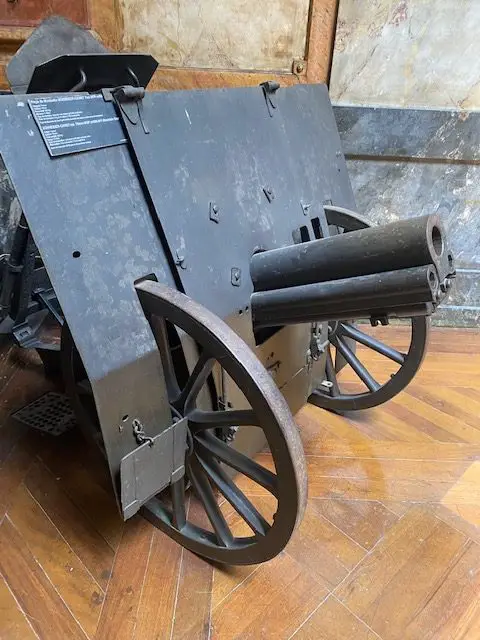
What will you find at the Military Museum of Lisbon?

Much like the nearby National Tile Museum, you might be drawn in by the museum’s holdings, but you will be surprised that the museum is also one of the city’s most beautiful buildings.
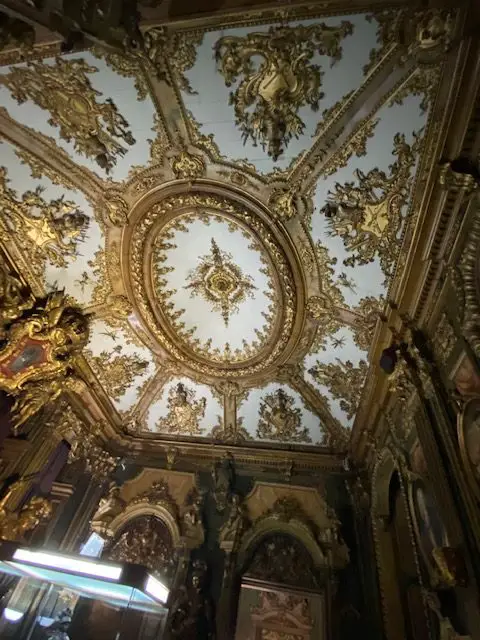
Within the 34 high ceiling baroque style rooms, you will find decoration fit for a King. They are works by artists such as Bordallo Pineiro, carved fireplaces, gold leaf trim, colorful marble, and ornately painted ceilings.
This underrated museum is easily one of the most beautiful buildings you will ever encounter. And you will mostly have it to yourself.
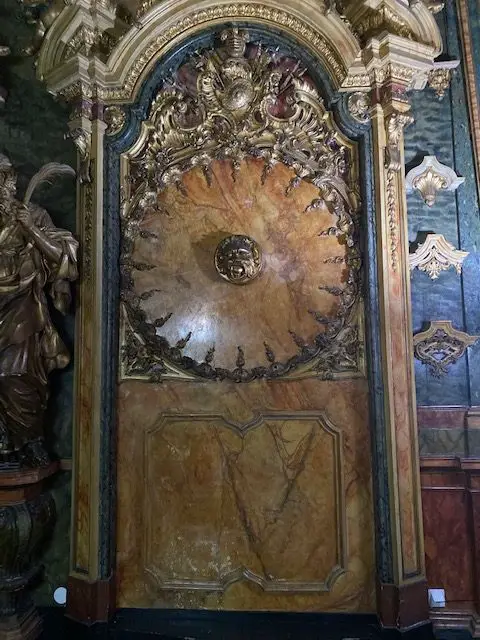
The museum looks like it was once a royal palace, but the truth is – in the 16th century it was a foundry and warehouse. In 1764 it was the Royal Arsenal of the Army and was converted into the national artillery museum in 1851.

The museum contains medieval, renaissance, and contemporary military artifacts. It provides an interesting walk through the evolution of weaponry and uniforms. Everything flows in one direction and is arranged in chronological order.
In the Vasco da Gama room, you will find cannons that accompanied the explorer on his discovery of India. You will also see Vasco da Gama’s massive double-sword.
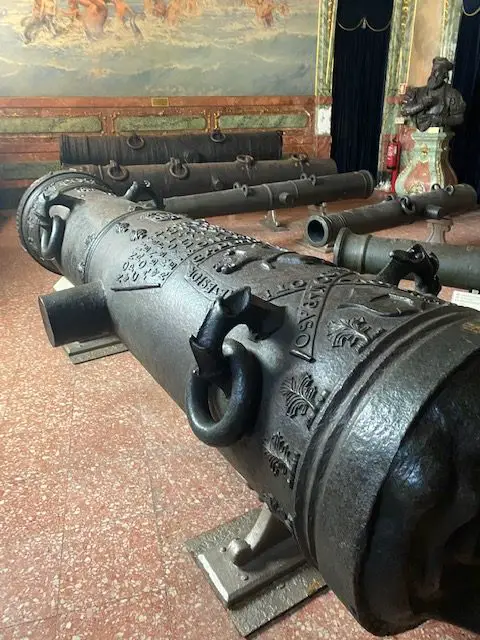
On the top two floors you will find maps and models, swords, crossbows, maces, armor, medals and uniforms, and many types of old pistols, rifles, machine guns, and cannons.
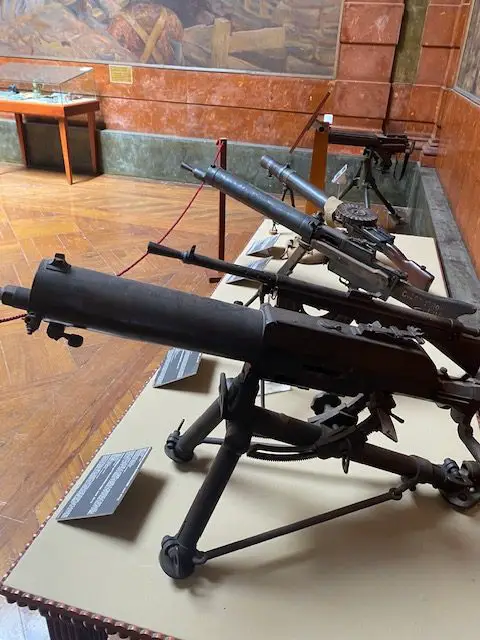
There is a room dedicated to the Peninsular War, in which the Portuguese and the British fought against Napoleon.
There is a large exhibit – the Sala da Grande Guerra, that chronicles Portugal’s role in WWI.
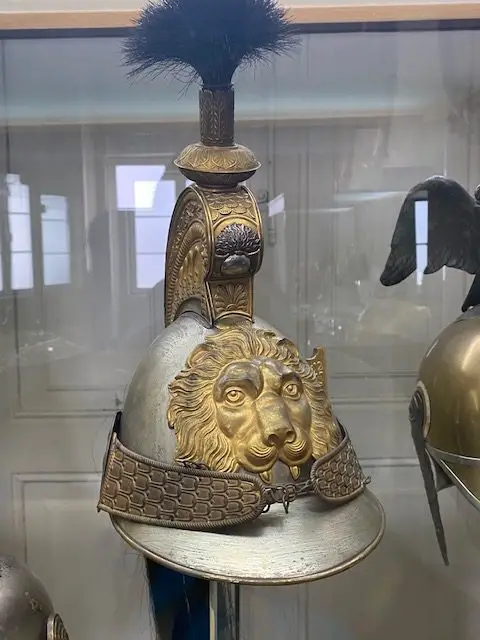
There are artefacts from clashes in Angola and Mozambique, as well as the Portuguese involvement on the western front.
In the basement there are still more cannons, and a collection of carriages. The most impressive piece is the massive carriage that was used to haul in the columns for the Rua Augusta Arch.
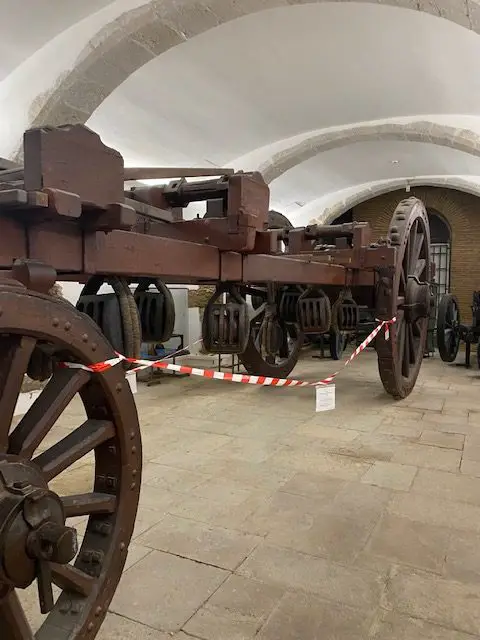
A collection of bronze cannons is displayed in the courtyard which is decorated with 26 blue and white azulejo tiles depicting Portugal’s battles from the Crusades to World War I.
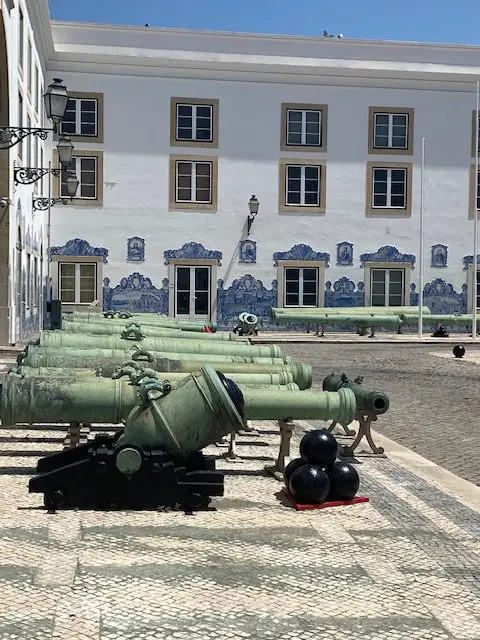
If you are a fan of blue and white azulejo tile, you will not want to miss the Military Museum. I rate it as one of the best places to enjoy tile in Lisbon. For more information on tiled façades, see my article Lisbon’s tiled houses – A tradition you will love
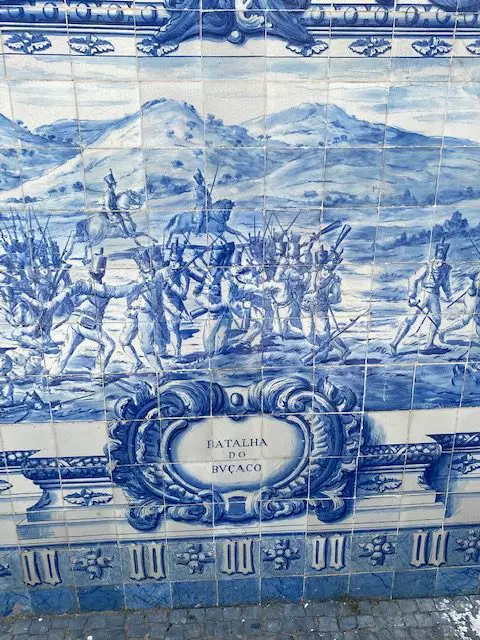
A beautiful collection of clay figurines by Carlos Gonçalves shows the evolution of Portuguese military uniforms.
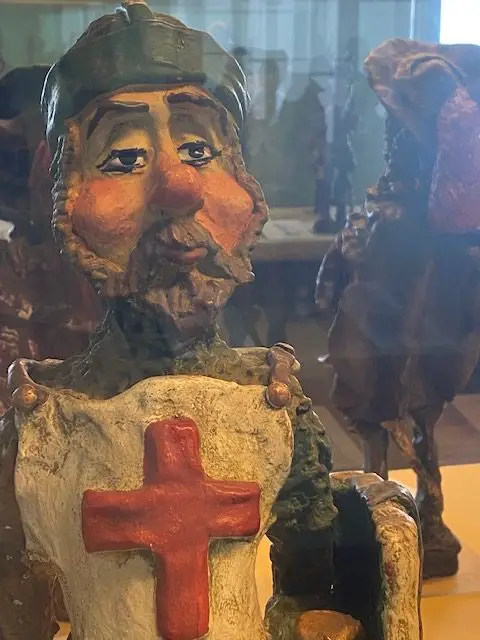
In total, the museum holds some 26,000 pieces. Unfortunately, most of the exhibits are only labeled in Portuguese, but this can be overcome by using the Google Translate camera feature on your phone.
Admission to the Military Museum of Lisbon
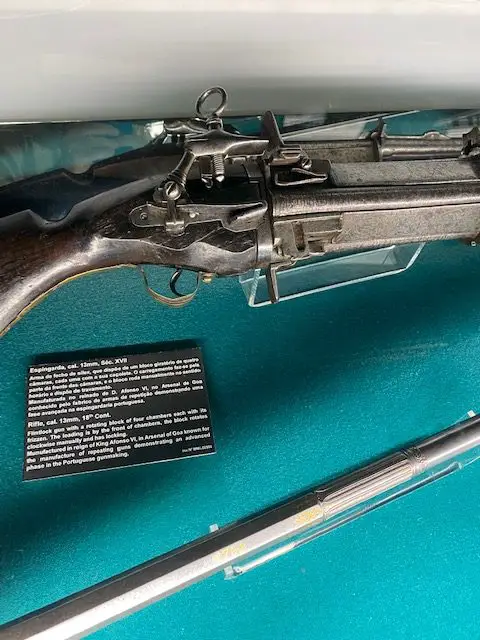
Admission is cash only. Tickets are 3€ for adults. Children under 13 – 17 and senior citizens pay 1€.
Children 12 and under are free.
Admission is free on Sundays until 2 pm for Portuguese citizens.
Official website: exercito.pt/pt/quem-somos/organizacao/ceme/vceme/dhcm/lisboa
Hours of the Museu Militar de Lisboa
Hours 10 AM – 5 PM, Closed on Monday. Reduced admission with a Lisboa Card.
The Military Museum of Lisbon is not accessible to those with limited mobility.
How to get to the Military Museum of Lisbon
Rua Museu da Artilharia, 51
GPS Coordinates: 38° 42′ 46.55” N | 9° 7′ 30.22” W
If you are coming from the Alfama neighborhood, walk down the hill toward the river.
All others should take the metro blue line to Santa Apolónia station, the last stop on the blue line. The museum is located across from the train station in a fortress-like building.
With the impressive facade and the impressive sculpture by Teixeira Lopes,this looks like the main entrance to the museum, but visitors enter on the opposite (western) side of the building.
The museum is also served by the following bus routes: 706, 712, 734, 728, 735, 759, 781, 782, 794
What else is nearby?
Santa Apolónia Train Station – Lisbon’s oldest train station is right across the street. Here you can find trains to and from towns in the north such as Coimbra, Aveiro, and Porto. This station does not serve Sintra or Cascais. Below the train station is the terminus of the metro’s blue line. For more information on Lisbon’s subway, read my Lisbon Metro: A helpful guide to the Lisbon subway
The Fado Museum – This fantastic little museum is a few minutes west on the river as well. It is a great introduction to Portugal’s unique Fado music. For more information, read my Lisbon’s Fado Museum – Everything you need to know
Lisbon Cruise Terminal – Also west along the river, the Fado Museum and the Military Museum are the two closest museums to the cruise terminal. If you need a hotel close to the cruise terminal, see my article Hotels near Lisbon’s cruise terminals- A quick guide
National Pantheon – Many of Portugal’s heroes are buried in this building with the giant dome.
National Tile Museum – This hidden gem is not one of the things that you specifically come to Lisbon for, but it is one of the coolest places in the city.
I am not affiliated with any businesses mentioned in this article. Thank you for reading about the Military Museum of Lisbon.